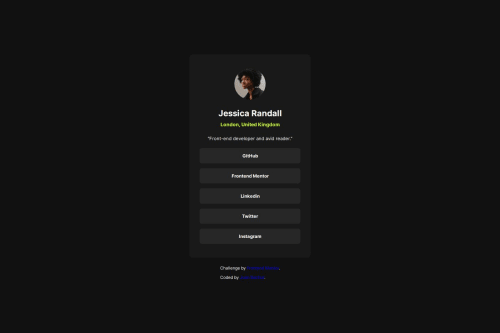Submitted about 1 year agoA solution to the Social links profile challenge
Responsive landing page using flexbox
accessibility
@JuanBachurDEV

Solution retrospective
What are you most proud of, and what would you do differently next time?
The exercise looks like very similar about the example of the frontend mentor page. In the next exercise I would like write with em and rem units in CSS, I think that way is the correct form to establish or write a good code.
What challenges did you encounter, and how did you overcome them?I could centralized the card in the middle of the DOM. Previously in the last exercise I could'n because I didn't notice how to made it.
What specific areas of your project would you like help with?I need some suggest about how to write with em and rem units in css.
Code
Loading...
Please log in to post a comment
Log in with GitHubCommunity feedback
No feedback yet. Be the first to give feedback on JuanBachurDEV's solution.
Join our Discord community
Join thousands of Frontend Mentor community members taking the challenges, sharing resources, helping each other, and chatting about all things front-end!
Join our Discord